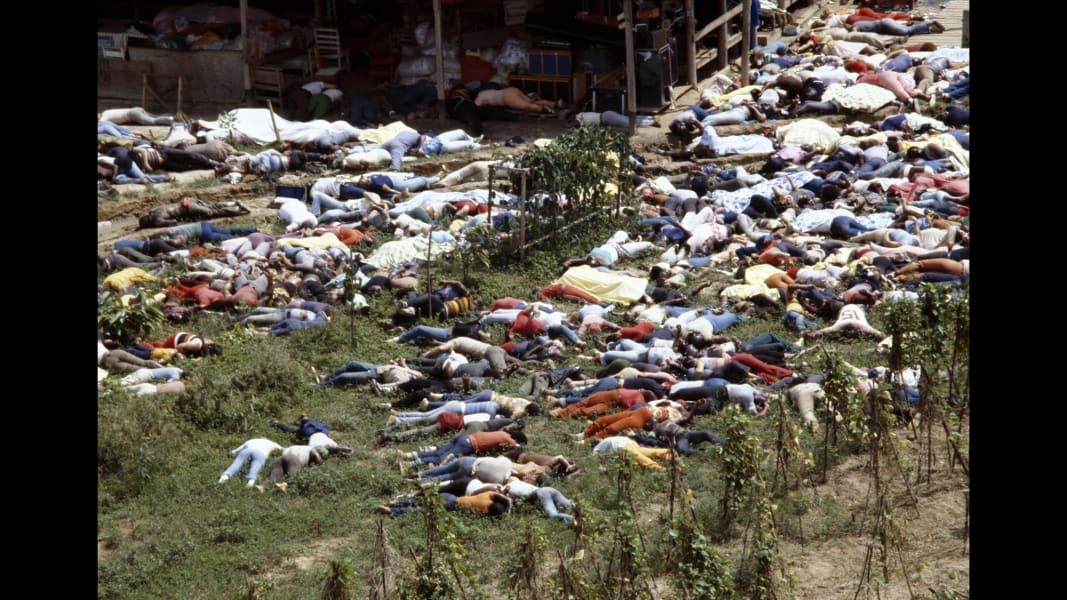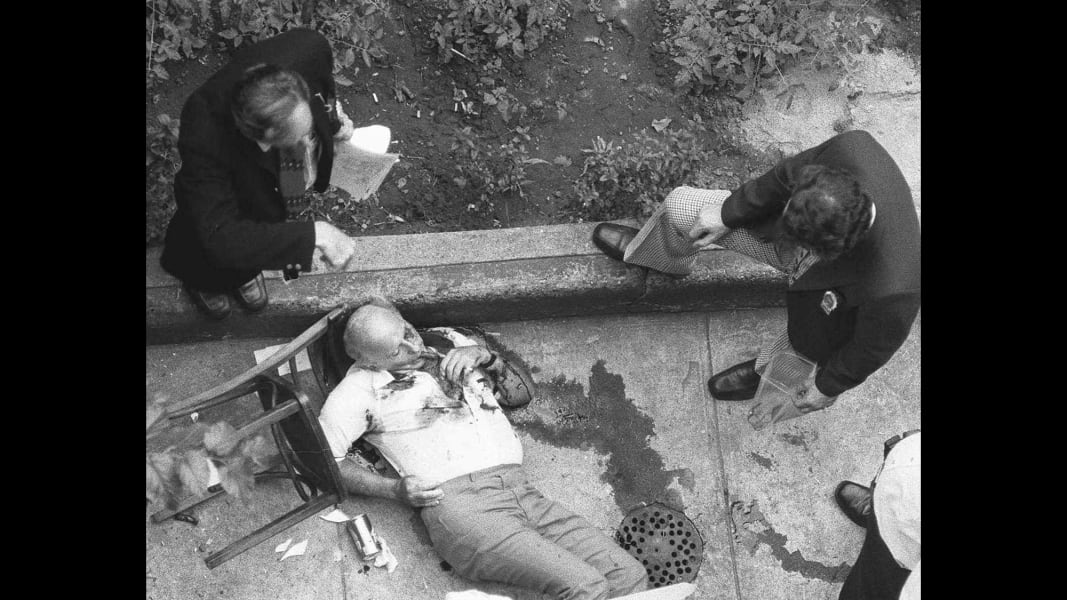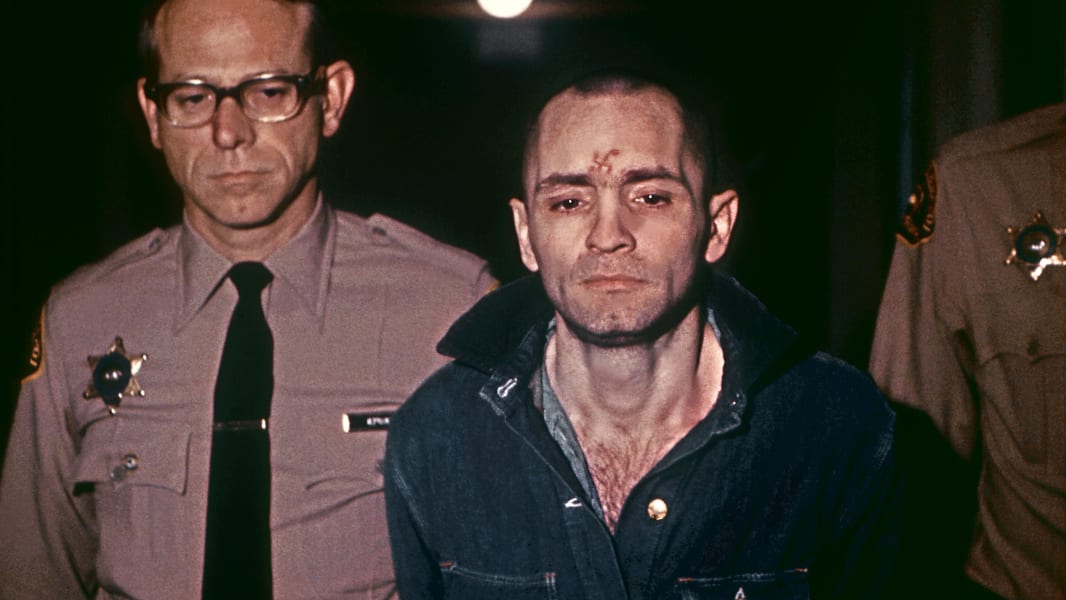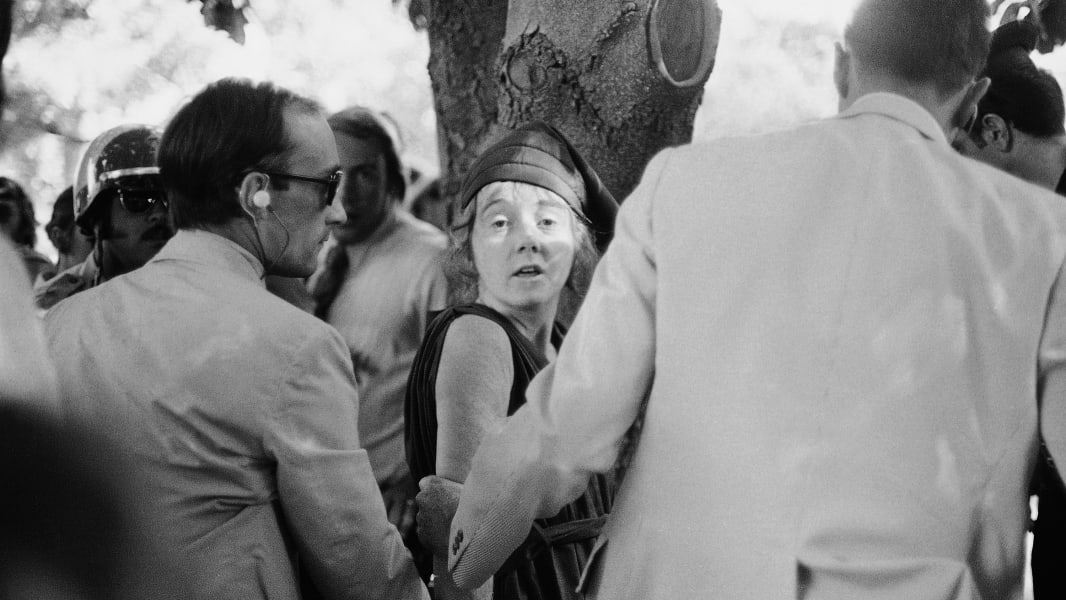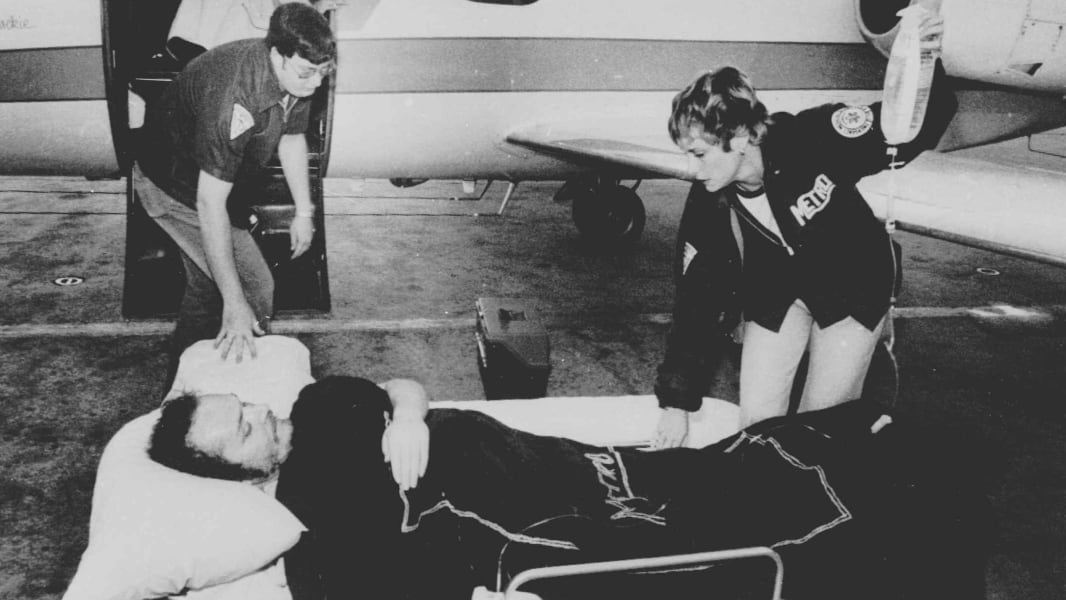

1 of 16
The Manson Family murders of Sharon Tate, the pregnant wife of filmmaker Roman Polanski, and others in the summer of 1969 shocked and captivated America, setting the tone for one of the most violent decades in the country's history as covered in the "Crimes and Cults" episode of CNN's "The Seventies." Here, Charles Manson is escorted to his arraignment on conspiracy-murder charges in connection with the case. AP
A beardless Charles Manson, sporting a shaved head in 1971. "The very name 'Manson' has become a metaphor for evil, catapulting him to almost mythological proportions," according to the late Vincent Bugliosi, the district attorney responsible for prosecuting Manson. AFP/Getty Images
U.S. Secret Service agents lead away Lynette "Squeaky" Fromme, a member of Charles Manson's "family," after she allegedly pointed a .45-caliber pistol at Presisdent Gerald Ford on the grounds of the California State Capitol in 1975. According to Jeff Guinn, author of "Manson," her first words after the being wrestled to the ground were, "Can you believe the gun didn't go off?" Fromme was paroled in 2009. AP
Less than three weeks after President Ford's encounter with "Squeaky" Fromme, political activist Sarah Jane Moore becomes the only woman ever to fire a shot at a president. Ford was unharmed. She plead guilty to attempted assassination and served 32 years in jail before being paroled in 2007. At the time, CBS News anchor Walter Cronkite expressed concern about presidential security, wondering "will it take another assassination in our lifetime to finally force some action?" AP
San Francisco's "Zodiac Killer" was blamed for at least five murders but took credit for as many as 37 in boastful letters sent to the police, some containing swatches of bloody clothing as proof. This is a copy of a cryptogram sent to the San Francisco Chronicle by someone claiming to be the killer.
San Francisco Chronicle/AP
San Francisco Chronicle/AP
Homicide inspectors David Toschi, left, and William Armstrong go through a "Zodiac Killer" victim's clothes looking for clues. "In the '70s there was a certain kind of killer who had the skill to get away with murder long enough to assemble the body count where they would be classified as serial killers," said James Alan Fox, the author of "Mass Killing." The Zodiac Killer has never been caught.
Susan Ehmer/The San Francisco Chronicle/AP
Susan Ehmer/The San Francisco Chronicle/AP
David Brooks, 18, right, squats on the beach with a law enforcement official as police search for bodies in High Island, Texas, in 1973. Brooks was implicated with Elmer Wayne Henley and Dean Corll, in the murders of at least 24 young men in a mass slaying case. "Dean Corill would pick up kids, and once he had them in his house, he would incapacitate them and put them on what he called his "death board" and rape and kill them," according to Stephen G. Michaud, author of "The Only Living Witness." Corll died in 1973. AP
After a four-year moratorium following Furman v. Georgia (1972), the U.S. Supreme Court reaffirmed the constitutionality of the death penalty in Gregg v. Georgia (1976). Gary Gilmore was the first person to be put to death after that decision, on January 17, 1977. Here, reporters view the chair where Gilmore sat when he was executed by firing squad. According to author James Alan Fox, Gilmore's last words were, "Let's do it." AP
A police mug shot showing New York City serial killer David Berkowitz, known as the "Son of Sam" and the "44 Caliber Killer." Berkowitz killed six people and wounded seven others between 1976 and 1977, mostly young women and couples in secluded locations. At the time of his arrest, he claimed a demon spoke to him through a neighbor's dog. He is currently serving consecutive life sentences totaling more than 300 years. Hulton Archive/Getty Images
John Wayne Gacy's police arrest photo from Dec. 21, 1978. Gacy was convicted of killing 33 young men and boys between 1972 and 1978. Before his arrest, Gacy had been active in the Democratic Party and had dressed as a clown to entertain children at parties. While on death row, Gacy took up painting. His pictures of clowns sold for between $200 and $20,000. Gacy was executed in 1994 by lethal injection. Tim Boyle/Des Plaines Police Department/Getty Images
Between 1977 and 1978, the naked bodies of nine women were found on the sides of various roads in the hills of California. The police attributed the murders to "the Hillside Strangler," who turned out to be a pair of killers -- Angelo Buono, pictured, and his cousin Kenneth Bianchi. On CNN's "The Seventies," author James Alan Fox notes "we've seen this time and time again --- pairs of killers who urge each other on, and together they are extremely vicious and violent." AP
Theodore "Ted" Bundy, left, makes a point to members of his defense team at his trial in Miami in June 1979. Bundy raped and killed at least 16 young women in the early to mid-1970s, and was convicted of three Florida slayings, including that of a 12-year-old girl. He later confessed to killing more than 30 women and girls. "He was handsome, he was very involved with politics, he was educated, he was in law school. It didn't seem like the glassy-eye lunatic that many Americans believed serial killers would be," according to author James Alan Fox. AP
Larry Flynt, owner of Hustler magazine, lies on a stretcher in Atlanta, April 14, 1978, as attendants prepare to load him on board a hospital plane. Flynt was shot by serial killer and white supremacist Joseph Paul Franklin for publishing pornographic photos of a black man with a white woman. The injury left Flynt permanently paralyzed from the waist down. Franklin was convicted of six murders and claimed responsibility for as many as 22. He was executed in November 2013. AP
Portrait of American religious leader Jim Jones, the founder of the People's Temple, and his wife, Marceline Jones, seated in front of their adopted children and next to his sister-in-law, right, with her three children. In 1977, Jones relocated the People's Temple from San Francisco, California, to Jonestown, Guyana. He led the mass suicide of over 900 followers on November 18, 1978, before dying of a gunshot wound later that day. Don Hogan Charles/New York Times Co/Getty Images
Bodies lie around the compound of the People's Temple in Guyana on November 18, 1978, after the over 900 members of the cult died from drinking cyanide-laced Kool Aid, victims of the largest mass suicide in modern history. Jeff Guinn, author of "Manson," said on CNN's "The Seventies," "we will never know how many people voluntarily drank the poison. But other people were either coerced, brainwashed, or took it against their will. They were murdered." David Hume Kennerly/Getty Images
The bloodied body of mafia chieftain Carmine "Lilo" Galante, his final cigar still in his mouth, lies on the floor of a backyard garden in a Brooklyn restaurant July 12, 1979. Galante was gunned down along with an associate and the restaurant's owner. The killers allowed Galante's two bodyguards to leave unharmed. The murder is believed to have been part of a power struggle among New York's organized crime families. Robert Karp/AP

